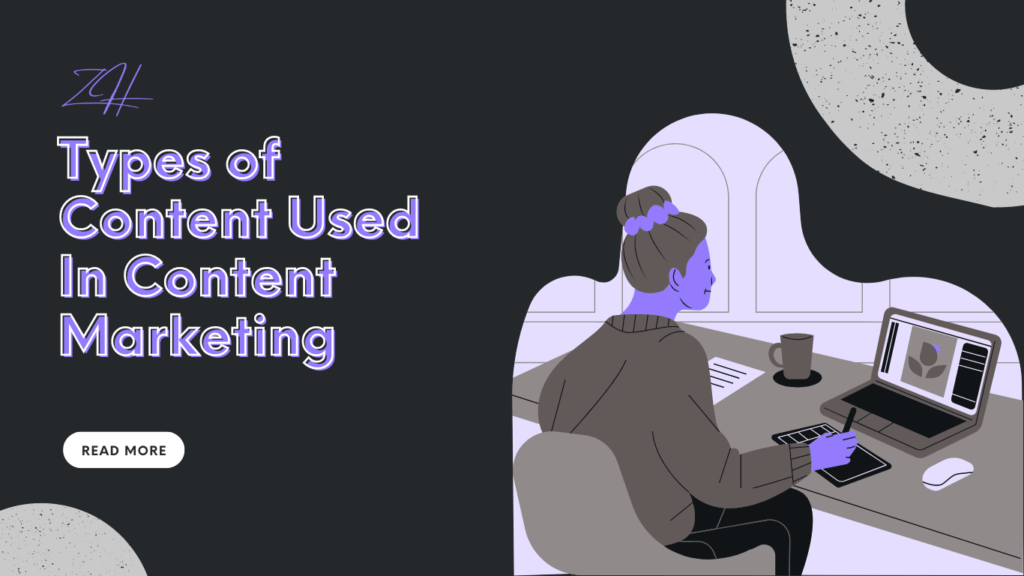
Types of Content Used in Content Marketing
In content marketing, the kind of material you provide is quite important for captivating your readers and increasing traffic. From teaching your audience to increasing brand awareness, all sorts of material have distinct uses.
1. Blog Posts
Many content marketing plans revolve around blog post. They give your readers important knowledge that will boost involvement and strengthen your brand as an expert. Easy sharing of blog material increases SEO and draws organic traffic.
2. Social Media Posts
The scene of modern marketing depends much on social media post. Short, interesting material is ideal on sites like Facebook, Twitter, and Instagram. Using hashtags and popular subjects will help your brand produce very shareable content that keep your audience interested.
3. Videos
Popular video material is expanding. Video marketing lets companies visually and dynamically communicate their message as platforms like YouTube and TikTok. Particularly for demonstrating products or explaining difficult concepts, video material is quite interesting.
4. Infographics
Infographics visually appealingly arrange facts and information. For rapidly presenting difficult material, this kind of content is perfect. Easy sharing of infographics across several platforms helps to improve the profile of your brand.
5. Podcasts
6. Case Studies
Case studies highlight the success of your brand by showing actual instances of how your good or service resolved a consumer issue. This kind of material is convincing and helps your audience to trust you, thereby presenting your brand as a knowledge leader in your field.
7. E-books
Longer formats of material that delve deeply into particular subjects are e-books. Since they usually need users to trade their contact data to download, they are great for producing leads. E-books give your readers insightful analysis and help your brand to be an authority.
8. Webinars
Webinars let companies instantly engage their audience. Teaching new skills or delving further into a subject calls for this kind of material. Live interaction made possible by webinars raises audience involvement and strengthens the bond with your brand.
9. Whitepapers
Though they are more research-driven and data-oriented than e-books, white papers resemble them. Usually employed in B2B marketing, they provide in-depth statistics and facts on a given problem or solution. White paper material helps you project your brand as a thought leader in your field of work.
10. Email Newsletters
Still one of the best strategies to involve your readers is email newsletters content. Customized newsletters help you directly distribute updates, promotions, or instructional materials straight to your members, therefore maintaining their knowledge and involvement.
11. User-Generated Content
User-generated content, or UGC, is anything your audience produced. UGC is strong for establishing authenticity and trust around your brand whether it’s images, customer reviews, or social media posts. This kind of content marketing uses the ability of your clients to draw fresh leads.
12. Interactive Content
Interactive content inspire audience involvement by means of tests, polls, or quizzes. This kind of material increases involvement and offers insightful analysis of the tastes of your audience that will help you to strengthen your marketing plan.
13. Product Demos
Content for a product demonstration lets you highlight the advantages and features of your offering. Product demos help prospective consumers grasp how your offering works by means of video or interactive experiences, therefore boosting the possibility of conversion.
14. Testimonials.
For your audience, testimonial material enhances credibility and confidence. Positive experiences from past clients help to convince future consumers that your good or service is dependable and well worth their investment in.
15. Guides and How-Tos
Content are useful tools meant to enable your readers to master new skills or solve problems. These detailed directions have value and inspire consumers to come back to your brand for more useful knowledge.
Conclusion
All things considered, including a variety of these content kinds into your content marketing plan can assist draw in, interact with, and hold your audience. Every kind of material has a varied use; from raising brand awareness to creating leads and higher conversion rates.

